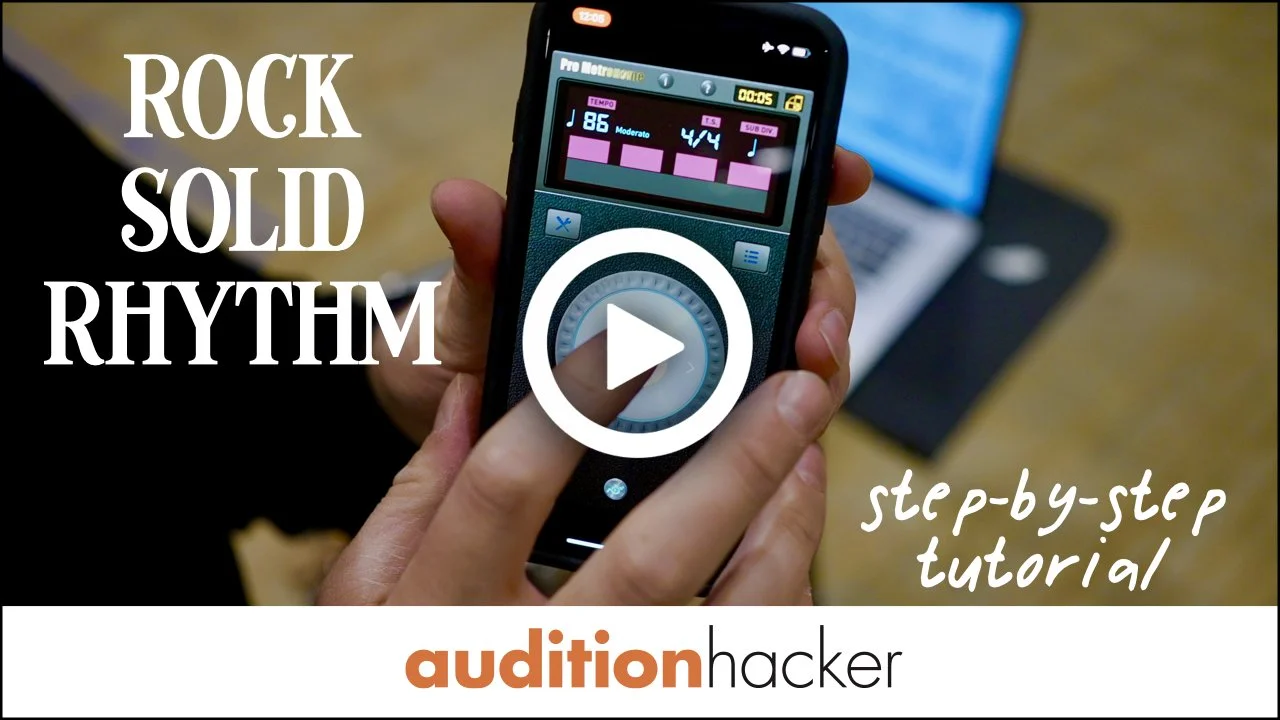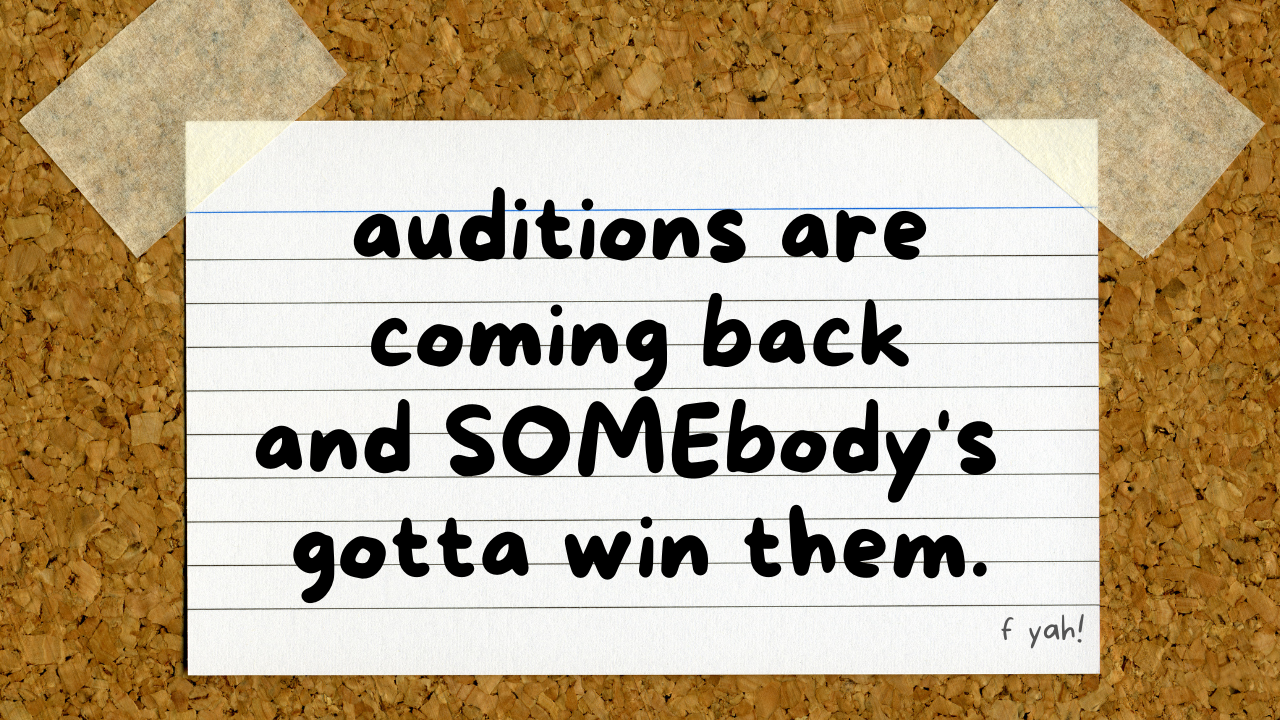it's day 2 of the 12 days of auditions! it's the video series where each day i cover a different topic on how to take auditions. yesterday was day 1: how to take an orchestra audition in seven steps. make sure to join the auditionhacker facebook group to see the rest of them.
today's video and blog is all about how to make a resume that increases the likelihood of getting a live audition. the piece below is an in-depth version of the content of the video, with things like links and more dumb examples! enjoy.
the first contact you make with the audition committee when you’re taking an audition isn’t the moment you start playing your excerpts. it’s the 10-second blink of an eye when the judges look at a piece of paper that represents your musical past. for the judges, the resume round of an audition is basically a glorified baseball card sorting session where every applicant gets sorted into two piles: yes and no.
it’s probably because it’s nonmusical, but ‘how to make a resume’ is one of the most common questions that i get asked. here are some examples:
“should i put my ensembles from college?"
“do you think they’ll want to see that i’m on the orchestra committee?"
“should i write that i ran 8 marathons?"
want to learn the audition preparation blueprint?
enroll in my new online mini-course called how to advance at an orchestra audition, 101. it'll be sent to your email starting november 10th.
what's a resume?
a resume is a piece of paper (or a one-page PDF) you provide to the committee to help them decide whether you are invited to the live audition. that's basically the only purpose for resumes for auditions. on that piece of paper is a list of targeted, strategic pieces of information meant to motivate the reader, in the 10 seconds they spend looking at it, to deem the candidate qualified to come to the live audition.
what it’s not:
it's not a life story, and it's not a collection of life accomplishments.
the successful resume (a silly example)
yo-yo ma could write a resume with just three words on it: yo-yo ma. that’s plenty of information to convince someone to put his resume in the ‘yes’ pile. someone like me? i’d add my orchestra, and where i went to school.
the content of your resume should have one singular purpose: to get you in the door. so in this blog i’m going to explain the four essential items of resume-making.
1. why: how come they ask for resumes in auditions? (and how that can help guide your resume-making process)
2. content: what to put inside
3. design: how it should look
4. getting started: dive in and make your own
1. why do they ask for a resume?
the idea of making a resume is misunderstood. that and your bio are the only things that you have to make in your professional life that sum up your life story, thus far. but for some reason that fact compels people to treat their resume as autobiographical master list for all their memories, or a kind of assemblage of every last thing that they’ve ever done. maybe the thinking is, “i should add everything just in case some random thing on the list makes a difference.” or, maybe it’s “better to be safe than sorry,” and to just include a whole bunch of things to fill up a page or two.
let’s flip that thinking on it’s head. the first step to creating a resume is to understand why a resume is asked for.
the resume round is the first round of the audition process.
the audition is a process through which an orchestra finds the best player for a performance role among a large number of candidates. in that process, they have to whittle the candidates down from everyone who applies to 1 in the most efficient and effective way that they can. let’s work backwards from the end.
in the final round, they listen to each candidate for a long time, but there’s only a few people left.
that’s where they want to look deeply into your musical personality and understand the intricacies of your style and musicianship. because there are so few people, they can afford to spend quite a large amount of time on each person.
the semifinal round has more people, but not too many, and each person is given a significant amount of time, but not too much.
the prelim round has a ton of people, and each person gets just a few minutes to play some basic excerpts.
from end to beginning, each evaluation period gets shorter, and the number of candidates gets larger. since the resume round comes first, that means that it has the most people, and the least amount of time is spent on each.
the goal of each round is to evaluate whether the candidate is qualified for the next round. and the resume round is just an extension of that. so people send in resumes, and an orchestra committee - maybe just one person or maybe a few people - goes through the pile and quickly decides which category each person gets thrown into: accepted or rejected.
remember the goal of your resume. it's to get to the next round.
from an orchestra's point of view, the point of the resume round is to filter people out quickly. it’s a way to decide who is invited outright to the audition, and who is either rejected or invited to send in an audition tape. and understanding this is important for one reason: to guide the creation of your resume. let's talk about what to put inside.
2. what goes inside your resume: the content
it’s an elevator pitch.
imagine this. you walk into an elevator with the principal of the chicago symphony, or with the music director of the la philharmonic, and that person says, “we need someone to play in the section for next week’s ein heldenleben. why are you qualified to play?
"you have until we get off this elevator to convince me.” you have to deliver the most high-impact 3 or 4 points that will convince them, with no fluff. that’s what a high-impact resume should look like.
so ask yourself this: what's your elevator pitch?
what are the most compelling pieces of your experience that would convince the principal of a section or an audition committee to invite you to an audition? that’s what your resume should include. it’s an executive summary of your performing experience and education. they shouldn’t have to google anything and they shouldn’t have to call a reference. if they want to know more about you, they’ll invite you play in the audition. the resume is a sneak peek, but they have to invite you to get the full experience.
so which are the most compelling items? well, each orchestra has different criteria for which resumes will get invited to the live audition. and even within an orchestra there might not be consistent criteria. some of the criteria i’ve heard is having ever subbed in a professional orchestra. other criteria is playing in an ICSOM orchestra for one year. if you’ve played in an ICSOM orchestra for one year then you should be qualified to at least audition.
rookie mistake: treating the resume like a scrapbook to collect and display all your life events
your resume should only have just enough to fully convince somebody and nothing else. if you put too much in there, you’re going to annoy the reader and show them that you don’t understand why you’re writing a resume. if it's a sign of immaturity to play excerpts too fast and flashy, it's a sign of immaturity to include too many things on your resume.
words or facts can never stand in the place of a musical performance. your goal should be to get inside the live audition, and then let your musical performance speak for you. the last thing you want to happen is that the judge deems you qualified after the first few lines, and then starts rolling their eyes after the next few.
so what goes inside?
resumes should have your performance experience and your educational experience. for your performance experience, write the exact details about that experience, but don’t let it be wordy. and then secondly, add the major bullet points of your education. everything should be truthful. and if you have to ask, “should i include this?” you should probably leave it out.
3. what your resume should look like - the visual component
a guiding principle: how you do one thing is how you do all things.
the visual aesthetic component is very significant because, remember, this is a sneak peak into who you are. it’s asking a judge to have a 10 second reaction to a one-page list.
when someone looks at your resume, they make a judgement about how you make a resume. they will assume that whatever aesthetic and attention to detail that you put into making a resume, you also put into making music. it’s almost a subconscious impression. is it good to judge a resume by its beauty rather than its content? maybe, maybe not. it doesn’t matter: it’s the barrier in between you and the live audition.
a visually compelling resume doesn’t mean a branded page with a logo and designs down either side. it just means that it should be easy on the eye. it should be obvious right away, like the front page of the new york times, what’s the most important headline and what you should read next. here are some guidelines to follow:
consistent formatting: if you list the dates you’re with one orchestra, list the dates of all of them. if you bold and italicize the conductor of that orchestra, make it consistent. capitalize the right things. (good thing i already won my audition.)
organized: performance experience in one place, educational in another.
when you look at a well-designed album cover, you come to expect the artist’s music to match that quality. that’s the same reaction you want to inspire through your resume.
4. how to get started
step 1: look up a whole bunch of resumes.
here are some great resume resources that you should check out. use them to get ideas of what content to include, how to design it, and how to get started.
step 2: get your content together.
make a list of everything you’ve ever done on the left, and a blank list on the right. add the best items from the left, and move on.
step 3: start creating.
open apple pages (or microsoft word) and start with one of the resume templates. or build it from scratch. pick a resume from your research that you like the formatting of, and try to match it. show it to a few friends, make sure it looks alright, and then send it in. that’s pretty much it.
going forward
remember, a resume is a constantly changing document. as the new england conservatory resume guide says, “your resume is always a work in progress." you should save a new version every time you change something. only add things if they’re really excellent and impressive. and be quick to erase things from your resume.
have fun, and see you tomorrow!












i've worked with hundreds of musicians on audition preparation. and nothing - NOTHING - has been as effective and life-changing as when they start self-recording the right way.